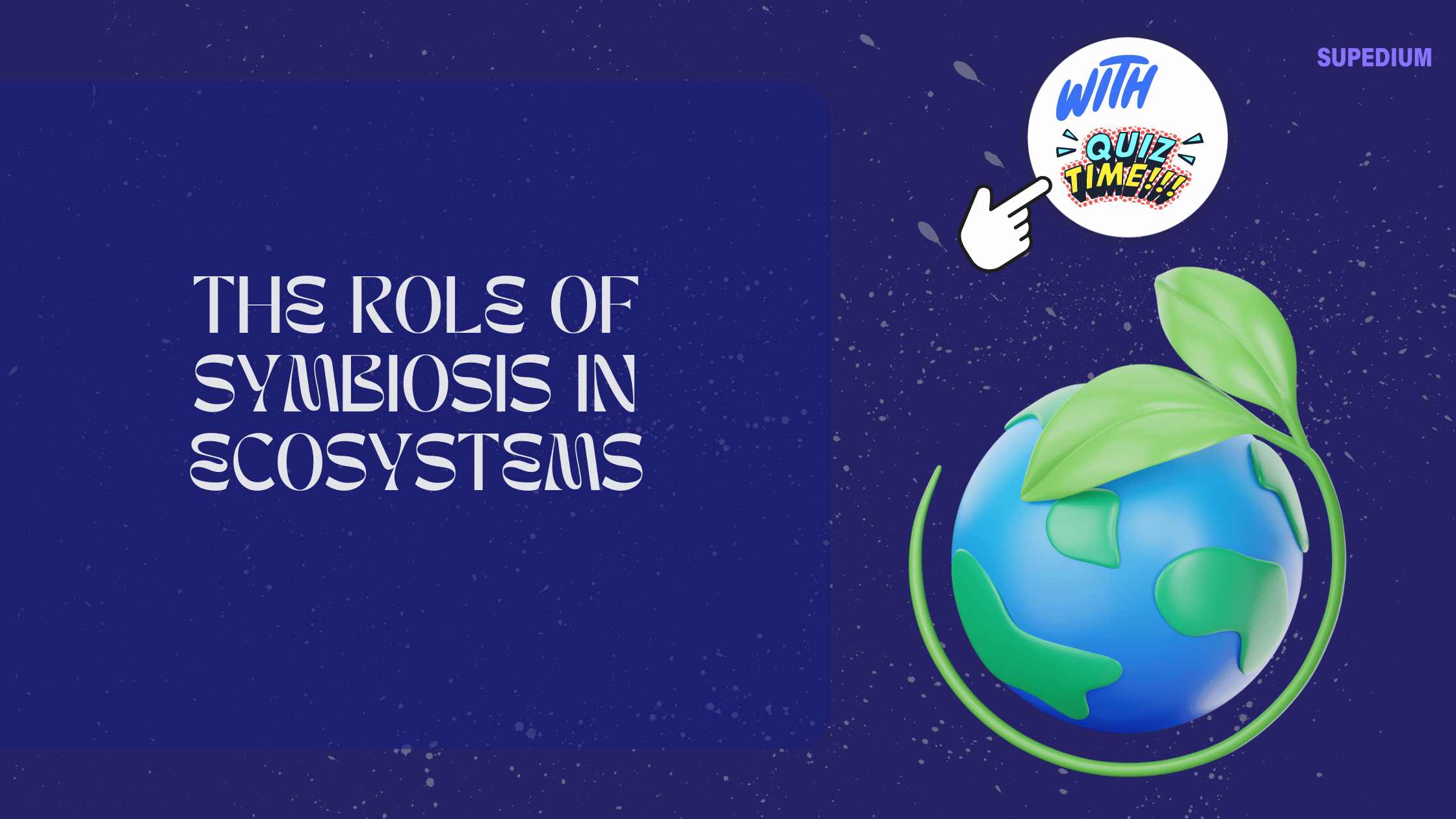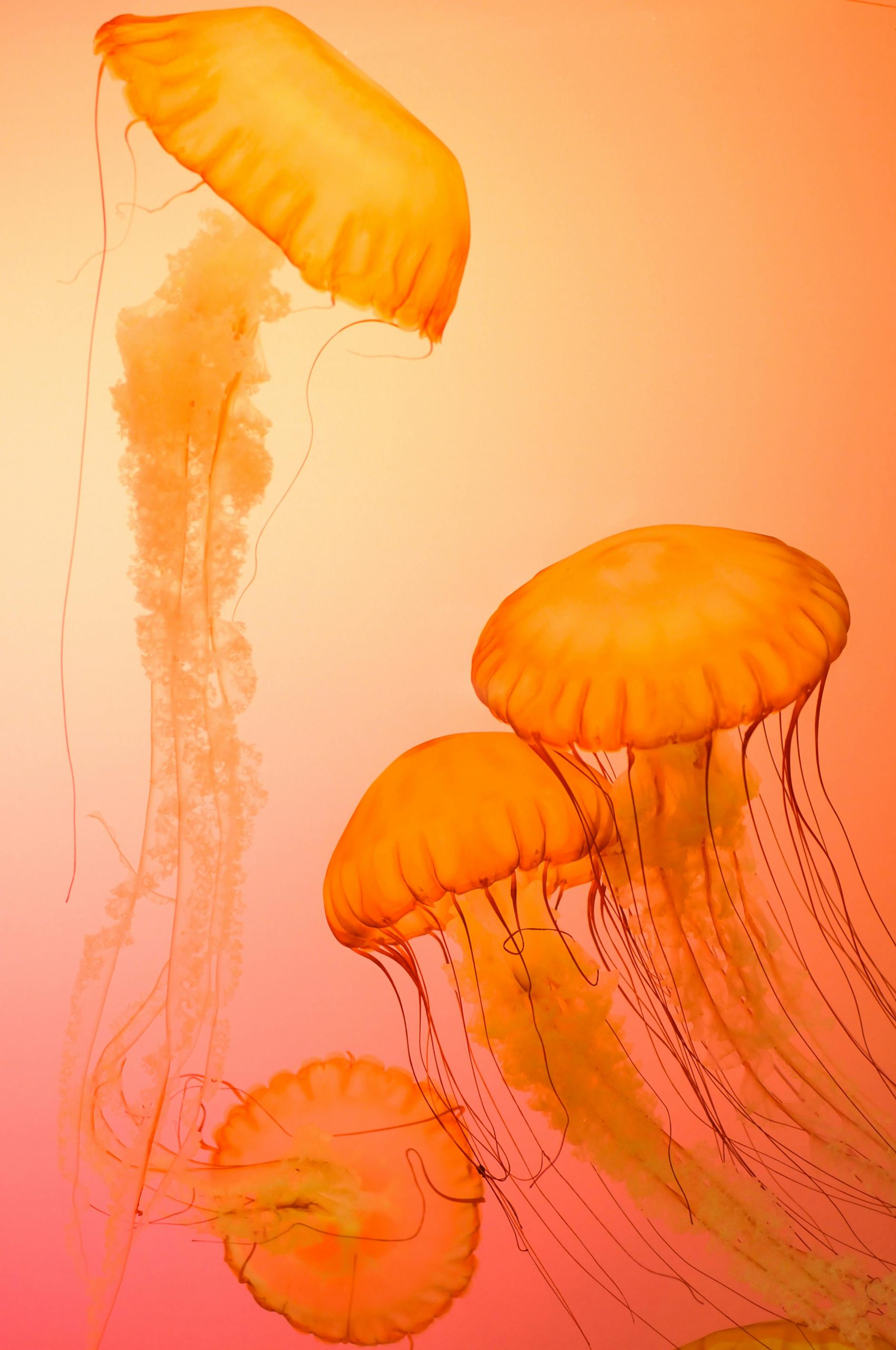Table of Contents
![]()
Introduction
Symbiosis is a fundamental concept in ecology that describes interactions between different species living in close physical proximity. These relationships can significantly influence the structure and function of ecosystems. Symbiosis is commonly categorized into three types: mutualism, commensalism, and parasitism. Each type plays a unique role in the ecological balance, contributing to the health and stability of ecosystems. This article explores the different types of symbiotic relationships, their roles in ecosystems, and their significance in various environments.
Types of Symbiotic Relationships
Mutualism
Mutualism is a type of symbiotic relationship where both participating species benefit. This mutually beneficial interaction can enhance the survival and reproductive success of both species involved.
Pollination: A classic example of mutualism is the relationship between bees and flowering plants. Bees collect nectar from flowers, which provides them with food. In the process, they transfer pollen from one flower to another, facilitating plant reproduction.
Mycorrhizae: This relationship involves fungi and plant roots. Fungi colonize the root systems of plants, enhancing nutrient and water absorption. In return, plants provide the fungi with carbohydrates and other organic compounds.
Cleaner Fish: Cleaner fish, such as cleaner wrasses, eat parasites and dead skin off larger fish. The larger fish benefit from reduced parasite loads, while cleaner fish gain a food source.
The significance of mutualistic relationships extends beyond individual species. They contribute to ecosystem health by supporting biodiversity, nutrient cycling, and habitat stability.
Commensalism
In commensalism, one species benefits from the relationship while the other is neither helped nor harmed. These relationships can influence the distribution and abundance of species within an ecosystem.
Birds and Trees: Many bird species use trees for nesting and shelter. While the trees are unaffected by the presence of nesting birds, the birds gain protection and a place to raise their young.
Epiphytes: Plants like orchids and bromeliads that grow on trees are known as epiphytes. They benefit from elevated access to sunlight and air, while the host trees are not significantly impacted.
Barnacles and Whales: Barnacles attach themselves to the skin of whales, gaining access to nutrient-rich water as the whale swims. The whales generally do not experience significant effects from the barnacles.
Commensal relationships can shape the structure of communities by influencing species interactions and distributions.
Parasitism
Parasitism is a relationship in which one species benefits at the expense of the other. Parasitic interactions can affect the health and behavior of host species and influence ecological dynamics.
Fleas and Dogs: Fleas feed on the blood of dogs, which can lead to discomfort and potential health issues for the host. Fleas benefit from a steady food source, while dogs suffer from infestations.
Parasitoid Wasps: These wasps lay their eggs in other insects, such as caterpillars. The larvae feed on the host insect from the inside out, eventually killing it.
Tapeworms: Tapeworms inhabit the intestines of various animals, including humans. They absorb nutrients from the host’s food, potentially leading to malnutrition and other health problems.
Parasitism can impact host populations and community structures by influencing reproductive rates and survival.
Symbiosis and Ecosystem Dynamics
Nutrient Cycling
Symbiotic relationships play a crucial role in nutrient cycling, which is essential for ecosystem functioning. For instance, mycorrhizal fungi enhance soil fertility by facilitating nutrient exchange between the soil and plant roots. This mutualistic relationship improves plant growth and contributes to soil health.
Population Control
Parasitic and predatory relationships are vital for population regulation. Parasites and predators can control the abundance of their hosts or prey, preventing any one species from becoming overly dominant. This regulation helps maintain biodiversity and ecosystem balance.
Habitat Formation and Maintenance
Certain symbiotic relationships contribute to habitat formation and maintenance. For example, corals and their algal symbionts (zooxanthellae) build coral reefs, which provide habitat for numerous marine species. Similarly, nitrogen-fixing bacteria in the roots of leguminous plants contribute to soil fertility, influencing plant community composition.
Symbiosis in Different Ecosystems
Terrestrial Ecosystems
Forests: In forest ecosystems, mycorrhizal networks are crucial for tree health and forest productivity. Ant-plant mutualisms, where ants protect plants from herbivores in exchange for shelter and food, also play a significant role in forest dynamics.
Grasslands: In grasslands, symbiotic relationships in the soil, such as those between plants and mycorrhizal fungi, influence plant growth and ecosystem stability. Grazers, such as bison, interact with plant communities, affecting vegetation structure and diversity.
Aquatic Ecosystems
Coral Reefs: Coral reefs are a prime example of a mutualistic relationship between corals and zooxanthellae. The algae provide corals with energy through photosynthesis, while the corals offer the algae a protected environment. Coral bleaching, caused by environmental stress, disrupts this relationship and threatens reef ecosystems.
Marine Environments: Cleaner fish, which remove parasites from larger fish, are essential for maintaining the health of marine species. Symbiotic relationships in deep-sea ecosystems, such as those between hydrothermal vent communities and chemosynthetic bacteria, illustrate the diversity of symbiotic interactions in marine environments.
Symbiosis and Human Impact
Environmental Changes and Symbiotic Relationships
Human activities, such as habitat destruction, pollution, and climate change, can disrupt symbiotic relationships. For example, deforestation can harm mycorrhizal networks and reduce forest health. Climate change can alter the conditions necessary for mutualistic relationships, such as coral-algae symbiosis, leading to coral bleaching and reef degradation.
Conservation Efforts
Protecting symbiotic relationships is crucial for ecosystem conservation. Strategies include preserving natural habitats, reducing pollution, and mitigating climate change. Successful conservation interventions, such as marine protected areas and reforestation projects, aim to safeguard these vital relationships and maintain ecosystem health.
Future Directions in Symbiosis Research
Emerging Technologies
Advances in genomic and molecular technologies are enhancing our understanding of symbiotic relationships. Techniques such as DNA sequencing and metagenomics allow researchers to explore the genetic interactions between symbionts and hosts, providing insights into the mechanisms underlying these relationships.
Integrative Studies
Combining field research with laboratory studies offers a comprehensive approach to studying symbiosis. Interdisciplinary approaches, incorporating ecology, evolutionary biology, and microbiology, can deepen our understanding of the complex interactions between species and their environments.
Conclusion
Symbiosis is a cornerstone of ecological interactions, shaping the structure and function of ecosystems. By understanding the different types of symbiotic relationships and their roles in nutrient cycling, population control, and habitat formation, we can better appreciate the complexity of ecosystems and the importance of preserving these interactions. As we face environmental challenges, continued research and conservation efforts are essential for maintaining the health and stability of our natural world.






Be the first to comment